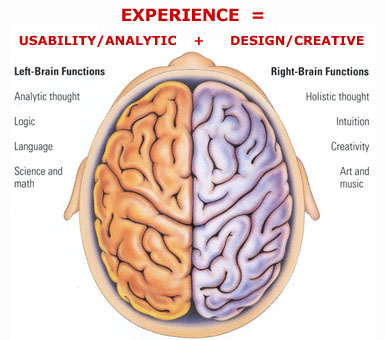I recently attended the Mocca Arts Fest 2014 in NYC. While I was there, I had the great pleasure of engaging in one of my favorite past times: People watching! There were all sorts of people with different ethnic backgrounds, different languages, unique attire, and as many different color hair you can imagine. It was wonderful and fascinating. All these people were celebrating a world of “art”. The creativity in one place was astounding. It was, as my children would say, totally awesome! I couldn’t help but think of the brain, and the constructs of this device, and how so much “right brain” was at play here. This of course, led to a gasp at the thought of how our school systems are geared so much toward “left brain” and how remiss our educational system is for not integrating the two in all dynamics of teaching to facilitate an integrated working brain. It is our right hemisphere of the brain that leads to success early on when a mother holds her child. This sense of attachment, and safety leads a child to becoming well developed and secure. So why abandon this side of the brain when we reach our academic years? If we connect and integrate, we will allow for more productive, engaged citizens who not only become increasingly more productive in the work force, but who also make a difference in their interpersonal relationships. An integrated person is someone who is “flexible, adaptive, coherent, energized, and stable”. On the contrary, an unintegrated person is filled with chaos, and rigid.
Interestingly enough, one week prior to attending the Mocca Arts Fest, I enrolled in a seminar taught by Tina Payne Bryson, PhD. where she presented on her book titled The Whole-Brain Child. As you may know, the left hemisphere of the brain is responsible for logic. It thinks in a linear fashion, and is based in a literal understanding. It is our “linguistic” or “language” side of the brain. It is here where we have a narrow view of reality, focusing only on what is directly in front of us. Our right hemisphere of the brain, on the other hand, is responsible for the “big picture”. This side of the brain senses emotion and body information. It is non-verbal. It is considered our creative side. Although both sides of the brain technically do both things, we tend to categorize these characteristics for each hemisphere as it is considered their specialties. When integrating these two hemispheres, it can dramatically change how we perceive the world, and how we relate to each other, and ourselves.
Strategies for integrating the left and right hemisphere of the brain include:
1. Connect and redirect: If your student, or your child, or your spouse is upset, and their reaction is hyperaroused presenting itself as yelling, screaming, deer in headlights, or panic attacks, or hypoaroused presenting itself as “shut down” and dissociative, they are, in essence, demonstrating an activated right hemisphere and so this is where we need to connect. We can connect with the right brain by comforting through touch, a soft tone, facial expressions, empathy, and pausing. This, then allows us to redirect with the left brain by first validating their feelings, and slowly build in to words, solutions, plans, logical explanations, and boundaries.
2. Name it to Tame it: If you are with someone who is clearly upset about an event or situation, it may be helpful to help them tell their story. This can be achieved by utilizing both the left and right brain. Together, you can create a book based on facts, feelings and internal experiences, along with empowerment strategies to facilitate giving their story or your own a happy ending. Telling your story and integrating it with a way to feel safe and produce a secure attachment can be most effective. It has been studied and proven that journaling of any sort can increase the immune system.
Strategies for integrating the upstairs and downstairs of the brain (the brainstem and limbic region with the mid prefrontal cortex and cortex)
1. Engage and don’t enrage: we can reduce the fright, flight, and freeze response by being more emotionally responsive and understanding to others’ sensitivities. Knowledge of the simple fact that our capacity to handle things fluctuates with many factors such as sleep, health, good day or bad day can be enough to become emotionally understanding and validate another’s outburst.
2. Use it or lose it: To exercise the upstairs of the brain, we must provide attuned communication and empathy. We must help another reflect by stopping, thinking, acting, and then reflecting in a mindful manner. This helps expand tolerance for flexibility, and encourages a secure relationship with us.
3. Move it or lose it: Exercise, exercise, exercise!! Movement creates emotional shifts. Playfulness expands tolerance and creates teachable moments, giving oneself the ability to withstand frustration when things don’t go your own way.
4. Rewind and remember: Engage in memory talk daily asking about each other’s day. This activates the hippocampus. Sometimes, if things are too difficult to remember, we can play a game where we can ask the other to rewind or fast forward to a point in time that is easier for them to remember. This can allow for a sense of control and is less threatening. Little by little, we can begin to recall the target memory. Again, begin where a person is, and then move forward!
5. Remember to remember: Kids, and all people enjoy recalling pleasurable moments of their lives. Conversing about it is where we integrate the two hemispheres. Here is where we have an opportunity to practice what we choose to keep in our awareness. When we are mindful and aware of our thoughts, feelings, and perceptions, we can choose to focus on those things we want and make us feel energized internally rather than those things we don’t want and make us feel depleted. By doing this, we create new neuro synapses which can literally change the brain to a healthier state.
6. Let the clouds of emotion roll by: feelings are like the weather. They constantly change. Did you know that a feeling lasts for only 90 seconds unless you give it attention? So, in order to utilize this strategy effectively, we must change our language about any event or situation. Rather than making statements which say “I am…”, you may encourage making statements such as, “I feel…”. This can allow negative feeling rise and release within you so that you do not identify and define yourself as such.
7. S-I-F-T (Sensations, Images, Feelings, Thoughts). Pay attention to what is going on inside of you. Be mindful! If something feels good, keep moving in that direction. If something does not feel good, stop doing it. Self awareness and insight are keys to a healthier you!
8. Exercise mindsight: Take control. You can practice this with a technique of closing your eyes or having your child close their eyes, and focusing only on the stomach. How does it feel? Then move your attention to your head. Keep going to all parts of your body. Create images for yourself that reflect health and beauty. This is what creates new neural associations.
In summary, I have culminated the teachings of Tina Payne Bryson PhD. to help us consider incorporating these strategies within the educational system within the dynamics of our academics. This way, we are sure to create more fascinating, well integrated children, citizens, and artists of our time as those whom I had the pleasure of watching at the Mocca Arts Fest.

